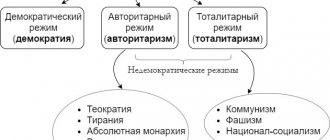Modern society cannot function normally without people interacting with each other. Each personality is individual, but, undoubtedly, it is believed that it must adapt to different situations. This allows a person to find a job, a partner, or go on a trip. A person’s manner of communication and behavior is formed throughout his life. They may change, be supplemented with other techniques, and any one type may be lost. Factors and reasons are very different. There is only one goal: to achieve results. Through communication, a person can achieve a lot; you just need to choose the right style of communication and behavior.
Communication styles
Communication style is characterized by a habitual, stable connection between the methods and methods of communication and the goals it pursues. That is, these are some features of interaction between people. A person is looking for a new job, comes for an interview - here he uses one style of communication, when interacting with colleagues - another, in the family and in communicating with relatives - a third. Different communication styles are chosen for each specific situation. No matter what action is taken, a person's words will always be the basis of communication.
Varieties of dialogue styles
Communication styles are different, and for each individual situation the most suitable one is chosen, both in behavior and interaction. For any situation, it is common for a person to “present” himself in different ways. But with inadequate self-presentation, dialogue becomes difficult.
To bring some clarity to this issue, psychologists have proposed descriptions of four interaction styles, which consist of:
- Ritual
. It depends on the culture in which a person is destined to live. This could include greetings and questions asked during the meeting, as well as responses. - Imperative
. It is an authoritarian, directive way of communication. The imperative style achieves control over the interlocutor’s behavior, bends his attitudes, or forces him to take certain actions and make decisions. This is achieved through orders, regulations and demands. Typically, the imperative style is used in the army, in relations between superiors and subordinates, and also in working with extreme conditions. - Manipulative
. If in the imperative style everything is extremely clear and open, then in the manipulative style the interlocutor exerts a secret influence. But the goal remains the same: to take control of your opponent’s behavior and thoughts. - Humanistic
. This method has all the varieties of dialogue. Here there is already equal communication, the purpose of which is to achieve mutual knowledge and self-knowledge. There is no place for imperatives, and deep mutual understanding is achieved.
Communication styles from a psychological point of view
Psychology has always dealt with problems of interaction between people. According to psychologists, communication style is determined by a person’s ability to choose certain means of behavior in a certain situation. They divided communication styles into three categories:
- flexible;
- rigid;
- transition.
With a flexible style, a person is well oriented in society, he can adequately assess who is in front of him, quickly understand what is being said, and even guess about the emotional state of the interlocutor. With a rigid style, a person cannot quickly analyze not only his own behavior, but also the behavior of his interlocutor. He has poor self-control and cannot always choose the appropriate way of behavior and communication. With a transitional style, a person has signs from the two above-mentioned styles. He does not fully understand what is happening around him, with whom he communicates and what method of interaction is best to choose.
Exploring Communication Styles
When studying communication techniques, you need to know that the style of communication in itself and the style of communication in any situation are different concepts. If you do not take into account the characteristics of a person’s character and the characteristics of the situation in which he finds himself, then the explanation will simply be meaningless. There are a large number of methods for studying communication styles. For example, A.V. Petrovsky created a system of pedagogical interaction consisting of two components. It was called the style of pedagogical communication.
In 1938, attention was paid to communication styles for the first time. German psychologist Kurt Lewin conducted a study and developed a classification of relationships between people who manage and people who are forced to obey. Subsequently, it became generally accepted and is still in effect. His teaching communication styles include:
- authoritarian;
- democratic;
- liberal.
Classification
Communication styles in psychology are most clearly manifested in the business sphere, in boss-subordinate interactions or between equal partners. Most researchers have based their classifications on research in this area.
The second most important area of study of communication styles is pedagogy. A clear manifestation of types occurs in the interaction between teacher and student.
According to K. Levin
The first classification of communication styles was created in 1939 by a group of scientists led by K. Lewin. The classification is the simplest, but due to its clarity, remains the most popular to this day.
The study of the issue was carried out in the field of leadership using an experimental method. Different groups of students completed identical tasks under the guidance of mentors who represented different styles of leadership communication.
| Style | Description | pros | Minuses |
| Authoritarian (directive) | The leader’s communication with the team comes down to sending instructions (directives), which are not subject to discussion and are mandatory. The subject of interaction makes sole decisions on issues of personal actions and the actions of other subjects. The opinions and convenience of other subordinates are not important. The personal initiative of each team member is not encouraged. Leadership is carried out using methods of dictatorship and hyper-custody. | Can have a positive effect in cases where the leader is the most competent person and quick decisions are needed when urgent action is needed, without discussing the opinions of other team members. | Rigid management, which does not take into account the opinions of experienced employees, leads to abuse of power, the development of conflict situations, and staff turnover, as a result of which knowledgeable specialists are lost. |
| Liberal (permissive) | The role of the leader is reduced to a minimum, as is his responsibility for the results of his activities. There is no control over the process or occurs selectively, unsystematically. In communication, indifference to the problems of the team and individuals is manifested. | It can be useful in a society where all team members have equal competence, qualifications and perform strictly defined isolated actions. | Irrational use of resources and time. Lack of control leads to a lack of motivation and loss of interest in the results of work. Hidden conflicts within the team. |
| Democratic | The style assumes the active participation of the leader in the activities of the group, while taking into account the point of view of each employee. The leader provides general guidance and control, provides assistance, encouraging the active work of everyone. Important decisions are made jointly. Management methods - requests, explanations, recommendations. | This leadership style implies high competence and impartiality of the leader. It is not always appropriate to demonstrate democracy in critical situations when urgent decision-making and implementation of actions according to strict instructions are required. | The manager's democratic communication style is recognized as the most effective. In this case, everyone’s potential is maximized, but at the same time discipline is maintained and high motivation is present. |
According to S. Bratchenko
The modern interpretation of interpersonal communication styles, developed under the leadership of Sergei Bratchenko at the end of the twentieth century, is also popular in psychology.
The styles identified in this classification, according to scientists, are found equally in various situations of interpersonal communication.
- The authoritarian style involves a focus on leadership and suppression of the interlocutor’s personality. This style of communication defines aggressive communication, egoism, and the requirement of complete agreement with one’s position. The interlocutor’s opinion is suppressed and not taken into account.
- The dialogical style of communication is based on trust and mutual understanding. The dialogue is conducted with respect for the opinions of all parties, which are focused on cooperation and mutual self-expression.
- The algerocentric style manifests itself when an individual’s communication is aimed at the needs of the interlocutor. Self-interests are ignored and voluntarily suppressed. The primary task is the development of the interlocutor, sometimes to the detriment of one’s own well-being.
- The manipulative style is focused on dialogue with the aim of using information for personal interests. Communication interlocutors act as means to achieve a specific individual goal. There is some cunning in communication: you should understand the interlocutor as best as possible in order to obtain information, while deeply hiding your intentions.
- A comfortable style implies a willingness to accept the position of the interlocutor, without wanting to express one’s point of view. An interlocutor who is characterized by this style of communication does not strive to conduct a constructive dialogue, to reveal his position, as well as to understand the position of his partner. Complete agreement with the point of view of the interlocutor, without delving into the essence.
- Indifferent - a style that manifests itself in a complete reluctance to communicate. The goal is to close the problem, no matter in what way, and walk away from cooperation.
According to L. Petrovskaya
Leading Russian social psychologist Larisa Petrovskaya (1937 – 2006) based her classification of styles on the factor of the situation itself in which communication arose.
Based on this, she identifies 3 main communication styles:
- The ritual style aims to satisfy the need to belong to a social group, a certain sphere of relations. The purpose of communication between partners is to maintain connections with the surrounding society. A partner in such a situation is a necessary attribute of achieving the goal. Ritual communication implies knowledge of the rules of a given society. Personal interests and characteristics are not taken into account in this case. The manifestation of a ritual style is most often characteristic of a society of people who have known each other for a long time or for organizations with a stable team.
- The manipulative type of communication is manifested in the use of partners to perform one’s own tasks. This is not always a negative thing. By presenting their best qualities and advantages to each other, partners solve many problems and each win in their own matter. To use this method of communication, you need to have skills in manipulating people.
- The humanistic style is manifested in equal interaction, when partners do not aim to promote purely personal interests, but care about the comfort and self-realization of the partner. In the process of communication, the parties support each other, respect the opinions of others, and do not try to manipulate or re-educate. The main conversational genre in this case is dialogue, during which all points of view are expressed. The decision is made on the basis of agreements and compromises, by the opinion of the majority. The humanistic style is the most democratic, but often in solving important production problems it is effectively used as an auxiliary option.
In social psychology
Each person has his own special style of communication, not only in the business sphere. In social psychology, there are several styles that classify a person’s behavior in communicating with others.
- A creative-productive (joint creativity) style allows all participants in joint activities to demonstrate their best qualities. In this case, partners strive for a common goal and find a single correct solution through joint efforts. Professional competence and personal ethical qualities are most clearly demonstrated.
- A friendly style involves communication based on respect and friendly disposition of partners towards each other. Sincere interest in the partner's personality and openness to him are a prerequisite for success in business.
- The distance style is widespread in the field of pedagogical communication, in the “teacher-student” connection. Distance determines the leading role of one of the participants and emphasizes the partner’s differences in age, social status, professional competence and other qualities. When maintaining this style of communication, it is important to choose the right area of its application in order to maintain a reasonable distance, but not go to the stage of complete detachment and dictatorship.
- The suppressive (mentoring) style is an aggressive manifestation of the distance style. In this case, one of the partners takes on the role of an all-knowing mentor-mentor, so that the opinion will be the main and unquestioning one. A constant patronizing tone in dialogue can lead to a breakdown in trusting relationships or a complete cessation of contacts.
- The flirting style can be seen as the unproductive extreme of the friendly style. The manifestation of the appearance of friendship is in this case insincere in nature, the goal is to gain artificial authority from the desired person. Often found in relationships between adults and children or in communication with subordinates of an inexperienced manager. Flirting can play a positive role in the beginning of a relationship between two people of the opposite sex.
Depending on the orientation of the individual
Communication styles in psychology are also classified depending on the orientation of the person:
- Executive – focus on carrying out assignments in accordance with the chain of command and accepted interpersonal contacts.
- Initiative – focus on one’s interests and business.
- The aggressive style is characteristic of individuals who strive to achieve success by controlling the actions of others.
- The aloof style is manifested by independent behavior and attempts to maintain a certain distance.
- The altruistic style is focused on helping others, to the detriment of one's own interests.
- Missionary – careful influence on other people.
- The attentive style is manifested by such signs as a sincere interest in the affairs of others and the ability to express grace.
- The transformational style is sometimes used by business people when, by appealing to high ideals, they try to direct their interlocutor to change their previous goals.
According to the criterion of adequacy of methods and means of communication
Classification of communication styles is also carried out according to the level of adequacy of methods and means of communication.
Based on these factors, 3 styles are distinguished:
- Flexible is a style characterized by a high degree of adequacy in the choice of communication means and behavior. Understanding the emotional state of the partner and the purpose of communication.
- Regular - a style in which there is no assessment of communication capabilities and analysis of communication strategy. The emotional state of the interlocutor is not subject to assessment, the subtext of the message is not considered.
- The transitional style combines the characteristics of flexible and rigid styles, depending on the circumstances.
Characteristics of pedagogical communication styles
Pedagogical communication styles were defined as emotional techniques and actions of the teacher in relation to the student. The teacher's behavior is determined by his understanding of the goal that he pursues in teaching the child. Most often, this is nothing more than teaching a child the basics of his subject, transferring skills that the student will need to complete a task, or that will be useful to him in later life. At the same time, the teacher also takes into account the child’s communication styles. Communication with children is completely different from that with adults. The teacher needs a little more time, effort and attention to explain the material to the child. Communication itself occurs through instructions, explanations, questions, comments and even prohibitions.
How to behave in a new team
Psychology of communication - how to learn to talk to people correctly
The strategy of behavior in a new team depends on the position held. If a school director may exhibit more authoritarian qualities, on the part of an ordinary employee such behavior may look like an abuse of authority.
Another example is a teacher and his assistant in a preschool educational institution. A teacher cannot only be a “democrat”; without authoritarian qualities, he risks shaking discipline in the group. A helper who is not involved in the children's teaching may adopt a liberal or neutral demeanor.
Beginning teachers have difficulty choosing a communication style; the most common mistake is lack of maneuverability. Often a young teacher chooses for himself the role of a “democrat” or a leader and does not deviate one step from it.
New teacher
When choosing pedagogical communication styles for yourself in a new team, you need to take a closer look at the students. To be sure, you can attend a class session with another teacher to assess children's behavior and develop your own strategy. If this is not possible, you need to conduct a short introductory lesson where you can communicate with your students and draw conclusions.
Learning is a complex technological process that largely depends on the teacher’s ability to convey information to students. The most productive type of communication is considered to be a mixed one, in which you can combine the best qualities and smooth out the shortcomings. Over time, each teacher develops an individual teaching style that he constantly uses.
Authoritarian communication style
An authoritarian style of communication implies that the teacher reserves the right to resolve issues independently. They can concern relationships between students, activities in the classroom, or concern each student personally. As a rule, such a regime includes both dictatorship and concern for subordinates. With such teachers, students can rarely open up fully and show their capabilities. Initiative can cause conflict between teacher and student. The teacher’s belief that only his thinking is correct and everything else is false does not allow both parties to interact productively. The child's answer cannot be adequately assessed because the teacher simply does not understand the student and is based only on performance indicators. His bad actions always come to the fore in the eyes of the teacher, while the motives for his behavior are not taken into account.
The importance of choosing the type of communication between the teacher and students
The choice of communication strategy depends on the following factors:
- Characteristics of the audience: age of the students, predominance of boys or girls in the class;
- Tasks that are set for the teacher;
- Characteristics of the teacher: phlegmatic or hot-tempered;
- Rules of communication that were previously established in the team. Some school and preschool educational institutions have their own behavioral systems, from which it is prohibited to deviate.
Types of communication in psychology - what they include, its functions
The atmosphere in the team and the students’ disposition towards the teacher and his subject depend on the chosen style. As practice shows, authoritarian behavior, which was previously the most common, is today unacceptable to be used in its pure form.
The pedagogy of past generations was based on the principle of student management, the transfer of knowledge was the main task. What is more important now is how much the child knows how to use this knowledge in real life. We can say that democratic and mixed communication styles are becoming increasingly popular.
Important information! When moving from junior to senior grades, teachers change, so it is important to pay attention to the choice of a new class teacher. After a liberal teacher, you cannot appoint an authoritarian one and vice versa. At the same time, a “democrat” is allowed to be installed in the place of the class leader, regardless of his predecessors.
Democratic style of communication
The democratic style of communication is considered the best, because the teacher strives to help the student, use all his strengths and capabilities, and activate the child’s role in the life of the class. Interaction and collaboration are the main goals of this style. The teacher evaluates, first of all, the good actions of the student, treats him well, understands him and supports him. If the teacher sees that the child does not have time to assimilate information or does not understand something, then he will definitely slow down the pace and explain the material more carefully, putting everything in order. The teacher adequately assesses the student’s capabilities and can predict the direction of his development. He takes into account the interests and wishes of his students. Some methods of teaching and communicating with students of teachers of the democratic style are slightly inferior to the methods of the authoritarian style of their colleagues, but the “climate” in the classroom is still better for the former. Children feel much freer.
Liberal communication style
The teaching styles of a liberal style teacher differ from those included in other teacher communication styles. He strives to reduce all chances of taking any part in the life of the class, and does not want to bear responsibility for the students. The teacher is limited to performing exclusively his pedagogical functions. The teacher's communication styles that he combines in his work lead to poor academic performance. He is somewhat indifferent to the problems of both the school and the children, as a result of which it is very difficult for him to control the students.
Characteristics of business communication styles
Business communication styles imply any actions or methods of communication aimed at achieving any result. In this case, the main task of those participating in the conversation becomes to reinforce the idea of themselves as a member of the team or society as a whole. The participant, as it were, puts on his festive mask and becomes a different person for a while. This peculiar ritual, on the one hand, sometimes seems meaningless and boring, but on the other hand, it is a game, the rules of which a person knows in advance and must follow.
Ritual style of communication
Business communication styles like ritual are often used in companies whose members have known each other for a long time. And so they meet, spend some time together, and it seems that after these years the topics discussed in these companies do not change at all. Sometimes you can even predict what one or another participant in the conversation will say, but, nevertheless, everyone is happy with everything and after the day, some even feel satisfied with the time spent. This style of communication is considered a typical case of a ritual style, where the quality of communication comes to the fore, and not its content. Thus, the same reinforcement of the idea of oneself as a member of a team occurs, where everyone occupies some place, everyone is important. His opinions, values, and worldview are important.
Cases when a person who, when asked: “How are you?” always answers unequivocally: “Fine,” and now suddenly begins to tell a detailed story about his life, family, children and work, which is called going beyond the ritual. Such atypical behavior of a person, whose reaction could always be guessed, violates the idea of ritual, because the main thing is to wear a mask, be it in social relationships or interpersonal ones.
Manipulative communication style
With this style of communication, a person is perceived by others as a means to an end. As a rule, the interlocutor tries to show the best aspects of his goal so that he can help him achieve it. Despite the fact that both participants in the conversation have different ideas about the component of this goal, the one who is more skillful in the methods of manipulation will win. In such cases, the interlocutor knows about the reasons for the partner’s behavior, about his aspirations, desires, and can turn the development of events in the direction he needs. Manipulation is not necessarily a bad method. Many goals are achieved this way. Sometimes, in order to convince a person to do something, to force him to act, it is necessary to resort to a manipulative communication style.
This can be compared to the communication method of a middle manager. He speaks in one tone with his superiors, but with his subordinates in a completely different tone. Sometimes it is unpleasant, but there is no other way.
There are cases when a person’s entire communication style comes down to manipulation. Due to the too frequent use of this method on a person, his constant persuasion and pushing, the latter may consider manipulation the only correct way out of the situation.
Conversational style
Communication styles will also include conversational and everyday styles in their list. It is characterized by informal relationships that are connected not only with everyday life, family, circle of friends, but also with the professional environment. Conversational language is used in interpersonal communication. It is because of this that its manifestation in most cases takes an oral form during spontaneous dialogues. Pre-thinking what is said during such a conversation is not always acceptable.
Colloquial speech is also used for self-expression; with its help, the individual’s individual abilities are manifested, since it has an emotional connotation.
A large role here is given to non-verbal means of interaction and expressive signals of the body. Informal communication has also found wide application in everyday vocabulary:
- Vernacular.
- Words that have a subjective assessment.
- Expressive and emotional statements.
- In the form of abbreviations.
- In the form of colloquial and everyday phraseology.
- Variety of particles, etc.
The use of exclamatory and incentive sentences is also widely practiced. This style of speech is used only in some specific cases.
Humanistic style of communication
With the humanistic style of communication, we are talking about interpersonal relationships in which a person wants to be understood, supported, given advice, to be empathized with. Initially, this type of communication does not imply any goal; the situation consists of ongoing events. This style of communication can be called the most sincere of all existing ones, where those very events are intimate, confessional in nature. The main method that works here is suggestion, and mutual. Each partner inspires the other that he is worthy of trust, that one is ready to listen, and the other is ready to tell what worries him.
Such communication can occur not only between loved ones and relatives. For example, in a few tens of minutes a person can recognize the interlocutor who is traveling with him on the bus in the next seat or tell him a lot about himself, but he does not know the person with whom he has been working for several years. A conversation with a fellow traveler leads to some revelations about oneself, makes people feel each other, and empathize. But a conversation with a colleague has completely different goals.
Diagnostics
Anyone can adjust their communication style in the right direction in order to establish harmonious relationships in a family or team. The beginning of such work is psychological testing, which helps to establish the individual’s real attitude towards others, his innate abilities and inclinations. There are many tests to determine personal communication style.
The most popular of them are:
- Test of interpersonal relationships by American psychologist Timothy Leary, created in 1950, adapted for the Russian-speaking environment by Lyudmila Sobchik. The purpose of the test is to determine the personal image of oneself and the predominance of the type of communication. The test consists of 2 parts and contains 128 statements about a person’s character. How he sees himself ideally and in the present period. The test can be used for personal assessment and for assessing a person “from the outside.” It is also possible to determine the degree of objectivity of self-assessment.
- The Persistence-Acquiescence Test is one of a series of interpersonal tests created by Hans Eysenck and Glen Wilson. The 210 questions have "yes" and "no" answer options. Using the test, the basic characteristics of an individual’s communication are determined: aggressiveness or flexibility, the ability to manipulate, the desire for leadership or subordination.
- “Diagnostics of communicative aggression” is a technique developed by Russian psychologist Viktor Boyko. The test allows you to determine the degree of aggressiveness in a relationship and the ability to switch. The “Aggression Index” is based on 11 parameters.
- “Diagnostics of the type of communicative attitude” was created under the leadership of Viktor Boyko to determine the presence and magnitude of the manifestation of negative attitudes in communication. The test consists of 25 questions that have “yes” and “no” answer options.
- The Interpersonal Relations Questionnaire by the American psychologist William Schutz is designed to determine the communicative characteristics of a person.
- The SMIL test was developed according to the basic method of L. Sobchik creates a complete psychological portrait of a person, including his communication styles. To get complete information about yourself you need to spend time and answer 567 questions. But there is also a shortened version of 65 questions.
Nowadays, you can take many tests and get results within a few minutes on the Internet online for free. The disadvantage of such studies is that a person who is not a specialist in the field of psychology cannot always objectively evaluate the test results. For serious research, it is better to contact a professional consultation center.
Psychological centers often conduct diagnostics of styles and other components of communication in the business sphere. Such services can be ordered by companies to assess the level of employees, or by individuals. The cost of services depends on the choice of specialist and the range of studies. The approximate initial cost of one test with comments from a psychologist is about 1,500 rubles.








